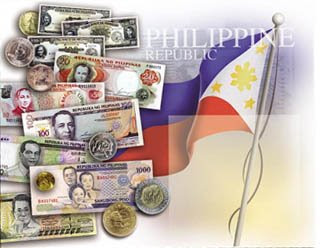
Hold up your paper bills to the light and, depending on the denomination, you will immediately see one or two vertical lines within the banknote. They are there as security features to make it very difficult for counterfeiters to imitate real currency. Likewise, they are there to help you differentiate the counterfeit from the genuine.
Embedded security thread
The embedded security thread is a special thread vertically implanted off center of the note during the manufacture of the banknote paper. This can easily be seen when the note is viewed against the light. It appears as a broken line for 5’s, 10’s and 20’s and straight line for 50’s, 100’s, 200’s , 500’s and 1000’s. Try folding the banknote along this line and you will feel the distinct stiffness of the thread. With some determination, it is also possible to manually remove these threads from the banknotes - but don't do that! It's illegal.
On the photo above, the embedded security thread is the solid vertical line on the left.
Windowed Colorshift with Cleartext Security Thread
This is a 1.4 mm security thread vertically located like “stitches” at the face of the note. It changes in color from magenta to green or green to magenta depending on the angle of view. When viewed against the light, it appears as a single solid line and the corresponding denomination of the banknote will show through. This security feature is only present in the 100s, 500s, and newer 1000-peso bills.




































